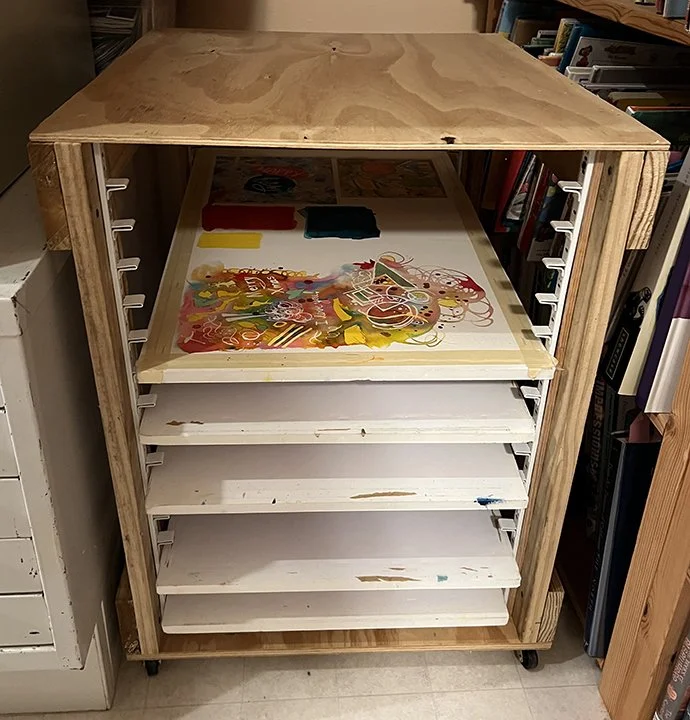I built this drying rack on wheels to store my Grafix Incredible Art Foam Boards. I stretch my watercolor paper on these boards to prevent warping, which happens when the paper gets wet. The fibers on a sheet of wet paper contract unevenly while drying. Stapling and taping the watercolor paper to the board keeps it flat. The uneven surface of an unstretched paper causes the new layers of paint to pool and puddle in the low spots, and the bumps show up as shadows on the scan. https://www.aliciaschwab.com/illustration
I replaced the top sheet of plywood with a thicker panel that can support much more weight when I use it as a moveable table.







